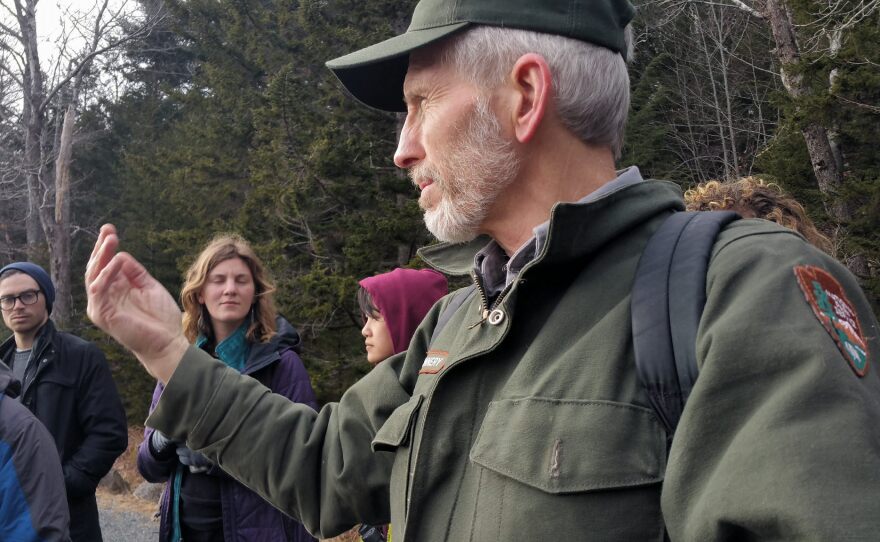Over the next few weeks, students from College of the Atlantic will be trekking across ice covered lakes and bushwhacking over frozen marshes on behalf of Acadia National Park. They’re on the trail of one of the park’s most fearsome predators.
Okay, so it’s not a bear or some kind of wild cat. It turns out that river otters- known for their penchant for sliding down hills and sporting in the water- are a top predator species at Acadia National Park. Bruce Connery is a wildlife biologist with the park service.
“They can eat anything from invertebrates of all kinds, so things like dragon fly larvae, and stuff like that, but they would prefer having things like crabs and fresh water mussels, or salt water mussels, or they would eat fish especially,” Connery says.
Because otters depend on so many other creatures for survival, they are an important pulse check for the park. If they are doing well, that’s likely good news for all things below them on the food chain.
“I guess you’d call them somewhat of an indicator species,” says Connery. “If you see them, and repeatedly they’re in that watershed year after year, then you can get a pretty good idea that that system is functioning as you’d hope.”
For the next several weeks, about a dozen students will be looking for clues about how otters and their prey are faring. It’s not as easy as it sounds. The process must be standardized so the same process is followed each time the students go out. And then there’s the fact that otters rarely show themselves. Students must learn to track them. They learn those techniques on the surface of a – mostly – frozen lake.
COA biology professor Steve Ressel shows the students how to chisel a hole into the frozen surface every few feet to make sure the ice is thick enough, and he points out areas that should be avoided. The next time the students head out, Ressel won’t be there to help them. For some, like third year student Siobhan Ricker, it’s a whole new world.
“I grew up in a city,” says Ricker, “and 50 degrees, and that was pretty much the standard.”
The students walk single file toward a beaver lodge – one of the places otters like to hang out. And then the group sees some exciting telltale signs: long marks across the snow and ice where an otter has slid along on its belly.
It’s not clear how many otters live in the park or what is going on that could shift the population one way or the other.
That’s because there hasn’t been an official, in-depth otter study done since the 1980s, says Bruce Connery with the park service. In the past the species has generally thought to be doing okay.
The park, says Connery, has its hands full reacting to potential threats like development and invasive species. And that’s one reason the help from COA is valuable. The survey has been taking place nearly every other year for the last six years. Only four data sets are available so far, but Connery says that’s better than nothing.
And there’s another reason biologists might want to keep better tabs on otters: climate change. Stephen Ressel says, in winter, otters do most of their hunting in the cold water, looking for fish.
“If waters warm, it could alter, you know, their prey base,” says Ressel. “But like everything else with shifting climate, you can come up with some predictions but, it sort of remains to be seen.”
As for how the otters are really doing, it’s hard to tell with so little data. But Connery says with future studies the park hopes to get a better idea.
The students will continue to track otters over the coming weeks until the end of March. The data will then be compiled and reviewed sometime in April.








